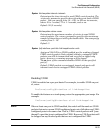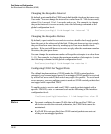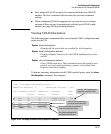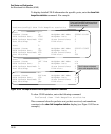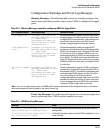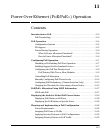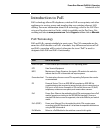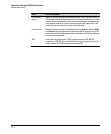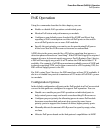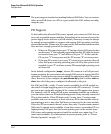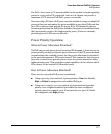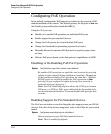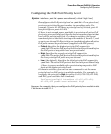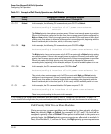
Power Over Ethernet (PoE/PoE+) Operation
Introduction to PoE
Introduction to PoE
PoE technology allows IP telephones, wireless LAN access points, and other
appliances to receive power and transfer data over existing ethernet LAN
cabling. For more information about PoE technology, refer to the PoE Plan-
ning and Implementation Guide, which is available on the ProCurve Net-
working web site at www.procurve.com. Select Support and then click on Manuals.
PoE Terminology
PoE and PoE+ operate similarly in most cases. The CLI commands are the
same for a PoE module or a PoE+ zl module. Any differences between PoE
and PoE+ operation will be noted, otherwise the term “PoE” is used to
designate both PoE and PoE+ functionality.
Term Use in this Manual
active PoE port A PoE-enabled port connected to a PD requesting power.
DTE Data Terminal Equipment
MPS Maintenance Power Signature; the signal a PD sends to the switch to
indicate that the PD is connected and requires power.
Oversubscribed The state where there are more PDs requesting PoE power than can be
accommodated.
PD Powered Device. This is an IEEE 802.3af-compliant or IEEE 802.3at-
compliant device that receives its power through a direct connection to a
PoE port in a PoE device. Examples of PDs include Voice-over-IP (VoIP)
telephones, wireless access points, and remote video cameras.
PoE Power-Over-Ethernet; the method by which PDs receive power from a PoE
module (operates according to the IEEE 802.3af standard). Some pre-
standard PoE devices are also supported; refer to the FAQs for your switch
model.
PoE+ (POEP) Power-over-Ethernet Plus; the method by which PDs receive power
according to the 802.3at standard. It is backward compatible with devices
using the 803.3af standard.
PoE Module Refers to a PoE Module for the switches covered in this guide.
11-3



